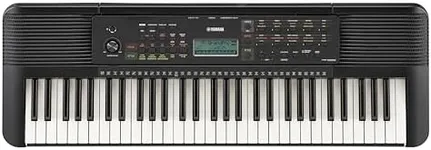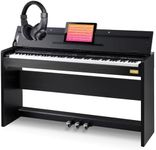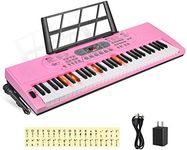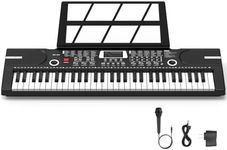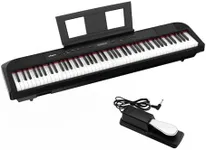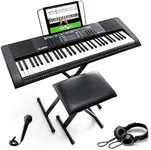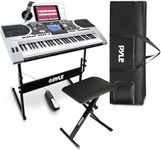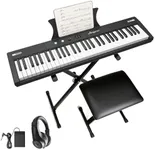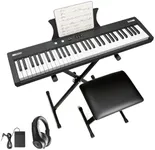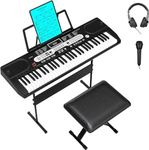Buying Guide for the Best Kids Piano Keyboard
Choosing the right piano keyboard for kids can be a fun and rewarding experience. It's important to consider the child's age, interest level, and the features that will help them learn and enjoy playing music. Here are some key specifications to consider when selecting a kids' piano keyboard and how to navigate them to find the best fit for your child.Number of KeysThe number of keys on a keyboard determines its range and the complexity of music that can be played. Full-sized pianos have 88 keys, but for kids, keyboards with 32, 49, or 61 keys are often more suitable. For very young children or beginners, a 32 or 49-key keyboard is easier to manage and less overwhelming. As the child progresses, a 61-key keyboard can provide more range and allow for more advanced playing.
Key SizeKey size refers to the dimensions of the individual keys on the keyboard. Full-sized keys are the same size as those on a traditional piano, while mini keys are smaller and better suited for young children with smaller hands. If the child is very young or just starting out, mini keys can make it easier for them to play. However, if they are older or more serious about learning, full-sized keys can help them transition to a standard piano more easily.
Touch SensitivityTouch sensitivity means that the keyboard responds to the force with which the keys are pressed, producing louder or softer sounds accordingly. This feature helps develop proper finger strength and dynamics in playing. For beginners, touch sensitivity is not essential but can be beneficial as they advance. If the child is serious about learning piano, a touch-sensitive keyboard can provide a more realistic playing experience.
Built-in Learning ToolsMany kids' keyboards come with built-in learning tools such as light-up keys, lesson modes, and interactive tutorials. These features can make learning more engaging and fun, helping children to stay motivated. If the child is a complete beginner, these tools can be very helpful in guiding them through the basics. For more advanced learners, these features might be less important, but still useful for practice and skill development.
PortabilityPortability refers to how easy it is to move the keyboard around. Lightweight and compact keyboards are easier for kids to handle and can be taken to lessons, friends' houses, or on trips. If the child will be playing in different locations or if space is limited at home, a portable keyboard is a good choice. However, if the keyboard will mostly stay in one place, portability might be less of a concern.
Power OptionsPower options include whether the keyboard can be powered by batteries, an AC adapter, or both. Battery-powered keyboards are more portable and can be used anywhere, while those with an AC adapter need to be near an outlet. If the child will be playing in various locations, a keyboard with battery power is convenient. For home use, an AC adapter ensures that the keyboard is always ready to play without worrying about battery life.
Sound QualitySound quality refers to how realistic and clear the keyboard's sounds are. Higher-quality keyboards produce more authentic piano sounds and may include a variety of instrument voices. For beginners, basic sound quality is usually sufficient, but as the child progresses, better sound quality can enhance their playing experience and enjoyment. Listening to sound samples or reviews can help determine if the sound quality meets your expectations.
